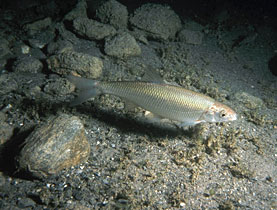Alarm sounded over chemicals in sunscreens

"High and worrying" levels of hormonally active chemicals known as endocrine disruptors can be found in maternal milk and aircraft, warn Swiss researchers.
The scientists said ultra-violet filters found in sunscreens and commonly used fireproofing materials were to blame for the presence of these dangerous chemicals.
Even at low dosages these chemicals have an effect, according to the national research programme into endocrine disruptors. They bind with hormone receptors in the body, upsetting normal functions.
They are also in widespread use and can be found in many synthetic materials, pesticides and even cosmetics, according to the researchers, who took part in a six-year national research programme.
Higher concentrations of the chemicals were found in breast milk, a fact blamed on the use of sunscreens and cosmetics by women. In 54 women tested, more than three quarters had traces of one or more UV filters.
Studies on rats carried out by programme participants showed these chemicals can have an effect on the development of sexual organs and the brain.
“This is why we need more studies to find out just how dangerous these levels of endocrine disruptors are,” Felix Althaus, head of the programme’s steering committee, said in Bern on Thursday.
The researchers said that the levels that caused problems in rats were only 11 times higher than those found in some of the maternal milk samples. Normally, a factor of 100 is considered the safety margin for this type of study.
Threat to children
In their final report, the scientists warned that further research was all the more necessary because foetuses and small children are particularly vulnerable to the effects of endocrine disruptors.
“Extremely high” concentrations of these chemicals were also found in aircraft. In this case, they came from bromide flame retardants installed to comply with anti-fire norms.
Endocrine disruptors of this type are fairly common in the environment, in household dust or office spaces. Researchers consider that people absorb these airborne chemicals at least as much this way as they do through nutrition.
Small children who are still crawling as well as aircraft crew are considered to be among those most under threat.
Traces of bromide fireproofing agents have also been found in fish, in sludge at sewage treatment plants and even in foxes living in urban zones.
The good news, according to the researchers, is that the concentrations of endocrine disruptors in Switzerland’s lakes and rivers as well as in drinking water were rather low.
The researchers called for long-term surveillance of these chemicals. Working groups involving representatives of industry, scientists and the federal authorities are considering ways of reducing the effects of endocrine disruptors.
The cosmetics industry is already considering if it can do away with a UV filter commonly found in suncreens, 4-MBC. The federal authorities will decide if other restrictions are necessary and if bromide-based fireproofing should be banned.
swissinfo with agencies
Endocrine disruptors are chemicals that may interfere with the body’s endocrine system and produce developmental, reproductive, neurological, and immune effects in both humans and animals.
A wide range of substances are thought to cause endocrine disruption, including pharmaceuticals, dioxin and dioxin-like compounds, polychlorinated biphenyls, DDT and other pesticides, and plasticizers such as bisphenol A.
Endocrine disruptors may be found in many everyday products– including plastic bottles, metal food cans, detergents, flame retardants, food, toys, cosmetics, and pesticides.
Research shows that endocrine disruptors may pose the greatest risk during prenatal and early postnatal development when organ and neural systems are forming.
The National Research Programme 50 collaboration resulted in 146 scientific publications between 2001 and 2007.
The programme was launched with SFr15 million ($14.55 million) in funding after a report issued by the Federal Environment Office in 1999 showed that endocrine disruptors were already being found in the environment.
Altogether 31 projects benefited from the programme’s support.

In compliance with the JTI standards
More: SWI swissinfo.ch certified by the Journalism Trust Initiative

You can find an overview of ongoing debates with our journalists here. Please join us!
If you want to start a conversation about a topic raised in this article or want to report factual errors, email us at english@swissinfo.ch.